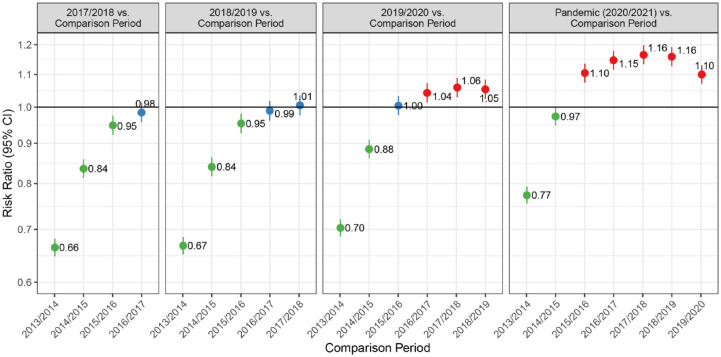承认新冠肺炎大流行期间长期护理中抗精神病药物使用的复杂性。
IF 2.4
Q2 HEALTH CARE SCIENCES & SERVICES
Health Services Insights
Pub Date : 2023-09-19
eCollection Date: 2023-01-01
DOI:10.1177/11786329231195211
引用次数: 0
摘要
本文章由计算机程序翻译,如有差异,请以英文原文为准。


Acknowledging the Complexity of Antipsychotic Use in Long-Term Care During the COVID-19 Pandemic.
that an increase in administration also occurred in the previous year among Alberta residents. Our analysis was a comparison of the pandemic period against the 2 most recent historical years and did not test for year-over-year trends. Interrupted time series analysis by Hoben et al 3 supports Dr. Quail’s argument that the inappropriate use of antipsychotic medications increased in the years leading up to the pandemic in Alberta. However, in alignment with our own findings, the rate of that increase accelerated significantly during the pandemic period. We offer supplemental analysis of pairwise comparisons back to 2013/2014 when Alberta was first included in the annual CIHI “Quick Stats” report (Figure 1). This illustrates that (1) the increase during the pandemic period was significant relative to all years since 2014/2015 and (2) the magnitude of the increase observed in recent years was largest during the pandemic period. Without question, a greater percentage of residents received inappropriate antipsychotic medications during the pandemic period.
求助全文
通过发布文献求助,成功后即可免费获取论文全文。
去求助
来源期刊

Health Services Insights
HEALTH CARE SCIENCES & SERVICES-
CiteScore
3.60
自引率
0.00%
发文量
47
审稿时长
8 weeks
 求助内容:
求助内容: 应助结果提醒方式:
应助结果提醒方式:


